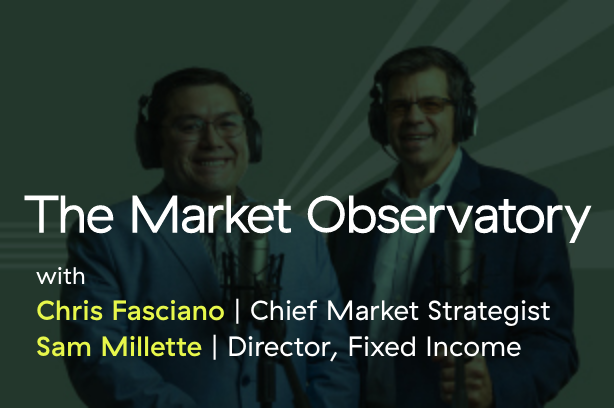 Last week, I once again had the pleasure of presenting at a Commonwealth conference. As always, our advisors' questions were well thought out, thought-provoking, and covered a lot of ground.
Last week, I once again had the pleasure of presenting at a Commonwealth conference. As always, our advisors' questions were well thought out, thought-provoking, and covered a lot of ground.
As investors wait for updates on trade deals during the pause in tariff implementation, the focus for many has turned to economic growth and the conflicting data surrounding it. So, let’s look at where we are and what could alter that path in either direction.
Soft Data Doesn’t Look Good
Soft economic data includes sentiment and expectations and is usually captured through surveys. Currently, it is telling a concerning story about the future path of the U.S. economy. Most of the attention has been on consumer confidence. As seen below, consumer expectations about the future have plummeted and are at lows not seen since the great financial crisis.

Source: Ned Davis Research
It’s a similar story in the subcategories: business, jobs, and income expectations have dropped to varying degrees. We have also seen declines in business sentiment and the manufacturing Purchasing Managers Index (PMI).
Hard Data Showing Economic Momentum
Despite consumer concerns, we have seen strength in measurable hard data like the recent retail sales and consumer spending reports. This trend is encouraging in an economy that is almost 70 percent driven by the consumer.
The headline of last Wednesday’s first-quarter GDP report caught everyone’s attention, as it showed a decline of 0.3 percent. But the weakness was due to a surge in imports in front of tariffs, as seen in the chart below.

Source: The Daily Shot
Without the impact of imports, the rest of the economy continued to show solid growth.
At the same time, Friday’s employment data beat expectations. The economy created 177,000 new jobs in April, with strength across many sectors from health care to construction. The three-month average for payroll growth is now 152,000. While this is certainly not at the red-hot level we saw a couple of years ago and is down from the end of last year, it remains at a solid level for consumer spending and economic growth.
What Happens Next: The Downside
Of course, the economy can go in one of two directions from here. The negative outcome would be that the hard data eventually mirrors some of the soft data. Much of the recent hard data was collected before the full effects of the 10 percent universal tariffs announced on April 2 would have been fully felt.
One of our concerns around the on-again, off-again tariff implementation is that the uncertainty will cause consumers and businesses to pause their spending decisions until they gain clarity on the policy path. While we don’t envision a 2008–2009 or 2020 slowdown, this could lead to no growth or modest declines in GDP. When it comes to the short-term economic outlook, another concern is supply chain constraints until there is evidence of progress on trade deals. The Port of Los Angeles is the biggest port in the U.S., and the chart below shows that incoming shipments have declined.

Source: The Financial Times
Much like we saw during the global pandemic, supply chain issues can lead to a limited supply of goods and potentially rising prices.
If no progress is made on trade deals, we would expect this situation to exacerbate. It would also likely lead to further increases in inflation. Both outcomes would weigh on economic growth in the back half of the year.
What Happens Next: The Upside
On the flip side, some positives could help the economy and offset some of the tariff impacts that are already in motion. Oil prices have declined 17 percent so far in 2025. Eventually, this should lead to lower prices at the pump for consumers and give them a little extra cash in their budgets.
While trade policy is playing out, Congress is also negotiating a budget and tax cut bill. At a minimum, we anticipate that the 2017 Tax Cuts and Jobs Act will be extended. There is also a possibility that other cuts are included in the bill, ranging from a further reduction in the corporate tax rate to eliminating the tax on tips and overtime. And depending on what the economic data looks like at the time the bill is finalized, we could see the inclusion of some form of stimulus checks to offset weakness in spending.
Finally, any progress on trade policy deals that further reduce or eliminate tariffs, especially as they pertain to China, would be welcome from an economic perspective. These deals could begin to reverse the negative sentiment of consumers and businesses, as well as the potential for any supply chain issues that might be developing.
Warren Buffett: The Consummate Long-Term Investor
Despite the recent rally in equity markets on improved tone surrounding tariff policy, the uncertainty that has weighed on investors for much of this year still exists. But that rally is a reminder that it is hard, if not impossible, to time markets. In reading some of the tributes to Warren Buffett over the past several days, I was struck by the fact that he has owned some of the stocks in his portfolio for 35 years. In many years, he neither bought nor sold a share of those holdings. He was the consummate long-term investor.
With emotions running high, maintaining a long-term focus during periods of volatility like we have seen this year is hard. But we continue to believe it is the best way to navigate these types of market backdrops. After being called into question over the past several years, diversified portfolios have helped weather the storm of headlines while maintaining broad exposure to stocks and bonds for when the uncertainty begins to dissipate.


 Print
Print

